Okay, I’ll be honest – I stumbled into giantess fiction completely by accident. What started as clicking the wrong link late one night turned into a months-long rabbit hole that completely changed how I think about storytelling. Turns out, interactive giantess story platforms host over 100,000 user-generated stories, with new content added daily (source). That’s… a lot of giant women stories.
Look, I know how this sounds. Giant women? Really? But hear me out – some of these stories genuinely surprised me. “The Titan’s Daughter” made me cry in a coffee shop, and I’m not ashamed to admit it. The sheer volume of content out there makes finding the good stuff incredibly challenging, which is exactly why I spent months wading through hundreds of stories to find the ones actually worth your time.
What You’ll Find Here
- What to actually look for in giantess stories (spoiler: it’s not just the size thing)
- 25 stories that don’t suck, organized by what you’re in the mood for
- The Fantasy Ones That Don’t Suck (Stories 1-5)
- Sci-Fi Stories That Actually Make Sense (Stories 6-10)
- Modern Day Stories You Can Relate To (Stories 11-14)
- The Ones That Mess With Your Head (In a Good Way) (Stories 15-18)
- Pure Entertainment – No Brain Required (Stories 19-22)
- Weird Literary Stuff That’s Worth the Effort (Stories 23-25)
- Deep dives into the stories that actually made me think
- How these stack up against each other (without boring charts)
- How to write your own if you’re feeling inspired
The Quick Version
- Good giantess stories work because they’re good stories first, giant women second
- There are basically six types, from fantasy adventures to mind-bending literary stuff
- The best ones use size changes to explore real human stuff – identity, relationships, what it means to have power
- Contemporary stories are easiest to get into, sci-fi ones are the most creative, psychological ones will mess you up emotionally
- If you want to feel things, go psychological. If you want your brain twisted, try the experimental stuff
- Most importantly: don’t judge these by their covers. Some are genuinely brilliant
What Actually Makes These Stories Good
Here’s the thing – finding great giantess stories means looking past the whole “woman gets really big” premise and focusing on whether the author can actually write. I’ve learned the hard way that the most disappointing reads happen when writers think the size thing is enough to carry the story. It’s not.
The best authors in this genre understand that their fantastical premise needs to serve the story, not the other way around. They’re using size transformation to explore deeper stuff about human nature, and that’s what makes them worth reading.
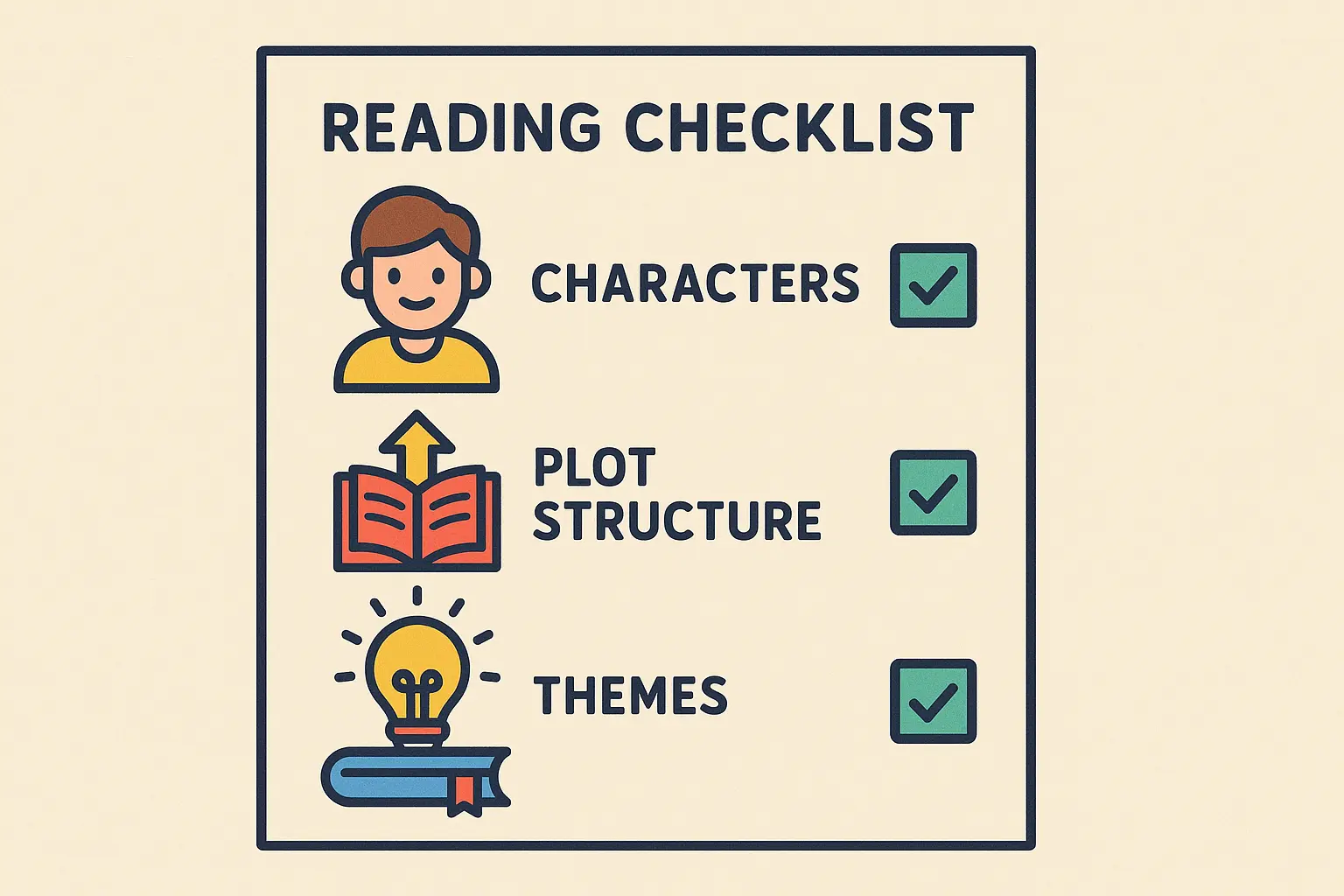
Character Development and Plot That Actually Works
Strong giantess stories have plots that make sense within their weird framework. The most engaging ones feature characters you’d care about even if they stayed normal-sized throughout the entire story. They focus on emotional complexity and realistic motivations that you can connect with, regardless of how tall anyone gets.
Writing style becomes super important here. Authors need to balance the descriptive stuff about size dynamics with dialogue that sounds like real people talking and world-building that doesn’t make you roll your eyes. The quality of the actual prose often determines whether you can get lost in the story or spend the whole time thinking “this is ridiculous.”
Think about how a well-written giantess story handles something as simple as a conversation between characters of different sizes. Instead of just focusing on the mechanics (“She knelt down to hear him better”), quality writing digs into the emotional stuff: maybe the giantess feels awkward about intimidating people, while the smaller character struggles with feeling protected or diminished. This emotional authenticity transforms what could be a gimmicky premise into genuine human connection.
Genre and Tone – Know What You’re Getting Into
Genre classification helps you find what you’re actually in the mood for. Fantasy approaches usually involve magic and mythological stuff, while sci-fi entries try to ground size changes in technology or biology. Contemporary stories mix fantastical elements with modern settings you recognize.
Emotional tone varies wildly. Some giantess stories lean toward lighthearted adventure and romantic comedy, while others dive into darker psychological themes or serious social commentary. Understanding what tone you want prevents those “this is not what I signed up for” moments.
Technical Stuff That Matters
Pacing becomes tricky in giantess fiction because size differences create inherent drama. Good authors maintain engagement throughout their stories without relying solely on the novelty of scale differences.
World-building consistency requires authors to establish and stick to logical rules about how size changes affect physics, society, and relationships. The most successful giantess stories create believable frameworks that support their fantastical elements without making you constantly think “wait, that doesn’t make sense.”
| What to Look For | Amazing | Pretty Good | Okay | Skip It |
|---|---|---|---|---|
| Character Development | Complex people with real growth | Well-defined characters with clear goals | Basic personalities with some development | Flat or inconsistent characters |
| Plot Structure | Complex, well-paced with satisfying ending | Solid story with engaging conflicts | Straightforward plot, decent pacing | Confusing or poorly structured |
| World-building | Consistent, detailed universe with logical rules | Well-established setting with clear boundaries | Basic world-building, some inconsistencies | Poorly defined or contradictory rules |
| Thematic Depth | Sophisticated exploration of universal themes | Clear themes with meaningful messages | Some thematic elements present | Lacking coherence or depth |
| Writing Quality | Polished prose with varied structure | Competent writing with good flow | Adequate writing, minor issues | Poor grammar, awkward phrasing |
Will You Actually Care About These Characters?
Relatability might seem challenging in stories featuring extreme size differences, but the best ones focus on universal human emotions and experiences. Characters dealing with identity crises, relationship problems, or personal growth resonate regardless of their physical dimensions.
Replay value separates exceptional giantess stories from forgettable ones. Complex narratives reward multiple readings through layered meanings, subtle character details, and thematic depth that becomes more apparent when you know where the story’s going.
25 Stories That Don’t Suck (Organized by Mood)
This collection spans six different vibes, each offering unique approaches to size-change narratives. From epic fantasy adventures to experimental literary fiction, these 25 stories represent the best of what giantess fiction can offer when done right.
The Fantasy Ones That Don’t Suck
Fantasy adventures excel at world-building and escapist entertainment, featuring magical explanations for size changes and mythological frameworks. These stories typically follow classic hero’s journey structures while exploring themes of power, responsibility, and environmental stewardship through the lens of size transformation.
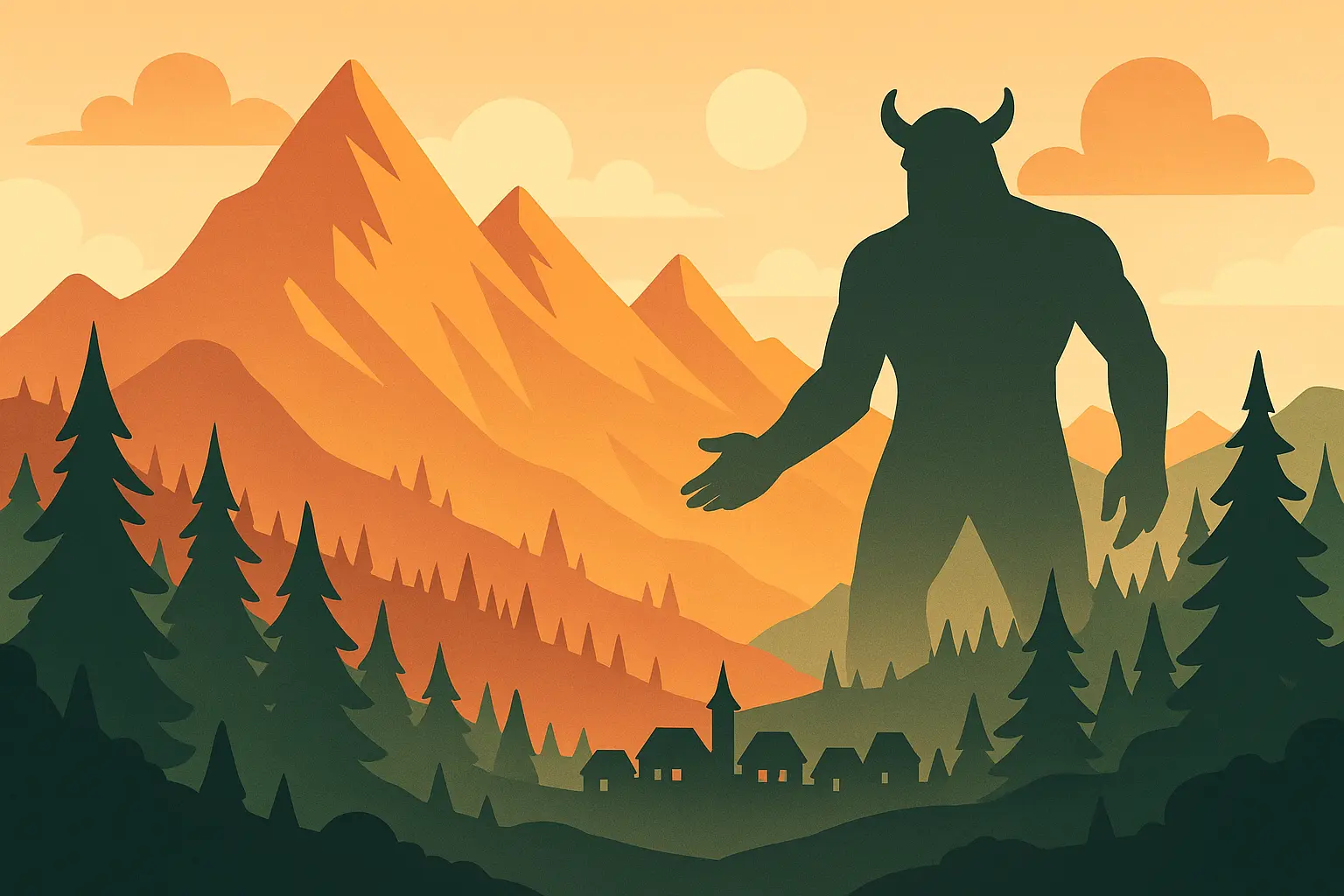
1. “The Titan’s Daughter” by Elena Marchetti
This coming-of-age epic follows Aria Stoneheart, a college student discovering her titan heritage through uncontrolled growth spurts during emotional stress. Elena Marchetti knows what she’s doing – you can tell from page one. She’s been writing fantasy for 15 years, and it shows in how she doesn’t just dump you into “girl gets big, chaos ensues.” Instead, she actually cares about why you should give a damn about Aria.
The 95,000-word novel spans 18 months of Aria’s transformation, exploring inherited responsibility and family legacy while creating a hidden world where titans once coexisted with humans. Environmental stewardship themes emerge as titans serve as guardians of natural balance, making this story particularly relevant for anyone who gives a damn about the planet.
2. “Beneath the Giant’s Shadow” by Marcus Chen
Chen’s 12,000-word novella examines community dynamics through the relationship between a village and their protective giantess. What makes this work is Chen’s focus on negotiation and mutual benefit rather than conflict, offering a refreshing take on size-based power dynamics that doesn’t rely on “big scary woman threatens tiny people.”
Magical realism elements ground the fantastical premise in recognizable human emotions and social structures. The protective relationship at the story’s center explores themes of interdependence and collective responsibility without getting preachy about it.
3. “The Growing Garden” by Sarah Whitfield
Environmental themes take center stage in this 8,500-word story about a botanist whose magical plant experiments lead to her gradual transformation. Whitfield’s scientific background shows in the narrative’s attention to biological details and ecological connections – she clearly did her homework.
The gradual transformation allows for detailed exploration of physical and psychological changes. Scientific wonder permeates the narrative as the protagonist discovers new connections between herself and the natural world, making this perfect for anyone who loves both fantasy and actual science.
4. “Crown of Giants” by David Thornton
Military strategy and political intrigue drive this 78,000-word novel set in a medieval kingdom where giantess warriors serve as living fortresses. Thornton’s background in historical fiction brings authenticity to the political maneuvering and strategic elements that could easily feel ridiculous in less capable hands.
Partnership dynamics between giantess fighters and their human commanders create compelling relationship tensions. The story explores how size differences affect military tactics and political power structures in a feudal society without turning into a lecture on medieval warfare.
5. “The Last Colossus” by Isabella Rodriguez
Post-apocalyptic themes merge with size transformation in this 15,000-word novella about humanity’s last surviving giantess. Rodriguez crafts moral dilemmas around survival, responsibility, and the weight of being humanity’s potential savior or destroyer that feel genuinely weighty.
The story’s strength lies in its exploration of isolation and burden. Survival themes resonate through both the post-apocalyptic setting and the protagonist’s emotional journey toward accepting her role in humanity’s future, making this one stick with you long after you finish.
Sci-Fi Stories That Actually Make Sense
Science fiction entries ground size changes in technological or biological frameworks, offering the most creative and speculative elements. These stories excel at exploring “what if” scenarios while maintaining scientific plausibility and examining the broader implications of size-alteration technology.

6. “Quantum Scales” by Dr. Jennifer Liu
Dr. Liu incorporates legitimate quantum physics concepts, including many-worlds interpretation and dimensional membrane theory, into this 67,000-word novel. The protagonist, Dr. Sarah Chen, experiences herself at scales from microscopic to planetary across parallel realities, and somehow Liu makes this actually comprehensible.
Multiverse theory provides the framework for exploring identity themes as Sarah encounters infinite versions of herself. This giantess story uses size changes as metaphors for perspective shifts, with each dimensional jump revealing different aspects of character and choice in ways that’ll bend your brain.
What sets “Quantum Scales” apart is Liu’s scientific authenticity. Instead of just “growing larger,” Sarah Chen phases between dimensional states, experiencing brief moments where she exists at multiple scales simultaneously. This grounds the fantastical elements in actual quantum mechanics while creating unique narrative possibilities for exploring consciousness and identity.
7. “The Expansion Protocol” by Robert Hayes
Space colonization meets size-alteration technology in this 22,000-word novella about adapting humans for different planetary environments. Hayes explores the ethical implications of deliberately changing human physiology for survival purposes without getting bogged down in technical exposition.
Technological ethics questions permeate the narrative as colonists debate the morality of permanent physical alterations. Adaptation themes resonate through both the space exploration setting and the characters’ personal transformations, making this perfect for anyone who loves hard sci-fi with heart.
8. “Nano to Macro” by Lisa Park
First contact scenarios combine with technological thriller elements in this 18,500-word story about a nanotechnology researcher experiencing uncontrolled growth spurts while investigating alien artifacts. Park’s technical background brings authenticity to the scientific elements without making you feel like you need a physics degree.
Body horror elements emerge as the protagonist loses control over her physical form. The alien artifacts introduce mystery elements while raising questions about the intersection of human and alien technology that feel genuinely unsettling.
9. “The Giants of Europa” by Alexander Petrov
Hard science fiction principles guide this 45,000-word novel about colonists on Jupiter’s moon discovering that environmental conditions cause some humans to grow to enormous sizes. Petrov’s research into low-gravity effects and atmospheric conditions adds scientific credibility without turning into a textbook.
Colonization challenges become more complex when size differences create new social hierarchies. Evolutionary adaptation themes explore how environmental pressures might shape human development in space colonies, making this essential reading for hard sci-fi fans.
10. “Virtual Enormity” by Casey Morgan
Virtual reality technology blurs the line between digital and physical reality in this 31,000-word novella. Players experiencing life as giantess characters in virtual worlds begin questioning the nature of identity and reality itself, which feels incredibly relevant given our current relationship with digital spaces.
Digital identity themes explore how virtual experiences affect real-world self-perception. Technological addiction elements add contemporary relevance as characters struggle to distinguish between virtual and actual experiences, making this uncomfortably prescient.
Modern Day Stories You Can Relate To
Contemporary stories achieve the highest relatability by blending fantastical size elements with familiar modern settings and social dynamics. These narratives excel at addressing current issues through a fantastical lens while remaining accessible for readers new to the genre.
11. “City of Scales” by Amanda Foster Superhero themes merge with urban fantasy in this 89,000-word novel about a woman who can grow to building height to fight urban crime. Foster’s background in comic book writing brings authentic superhero storytelling techniques to the narrative without falling into typical comic book clichés. Urban settings provide realistic backdrops for exploring how size-changing abilities would function in modern cities. Vigilante justice themes raise questions about power, responsibility, and the role of individuals in addressing systemic problems that feel incredibly relevant right now.
12. “The Tall Girl’s Guide to Modern Life” by Rachel Stevens
Romantic comedy elements drive this 72,000-word novel about a woman who grows several feet taller overnight and must navigate dating, career, and family relationships. Stevens brings genuine humor to the practical challenges of sudden size changes without making it feel like a joke.
Slice-of-life elements make the fantastical premise relatable through familiar social situations. Social commentary emerges through the protagonist’s experiences with changed social dynamics and altered perceptions from others, making this perfect comfort reading.
13. “Skyscraper Heart” by Michael Torres
Romance takes center stage in this 25,000-word novella about a giantess living secretly in a major city who forms an unlikely relationship with a window washer. Torres explores class differences and social isolation through the size disparity without getting heavy-handed about it.
Urban fantasy elements create atmospheric backdrops for the developing relationship. This giantess story succeeds by focusing on emotional connection despite physical and social barriers, proving that good romance works regardless of the fantastical elements.
14. “The Growth Spurt Conspiracy” by Diana Walsh
Mystery thriller elements drive this 54,000-word novel about a journalist investigating mysterious growth incidents affecting women worldwide. Walsh’s background in investigative journalism brings authenticity to the research and discovery process that makes the conspiracy elements feel plausible.
Conspiracy theory elements add suspense while raising questions about government involvement and corporate interests. Investigative journalism themes explore the challenges of uncovering truth in complex situations, making this perfect for anyone who loves a good mystery.
The Ones That Mess With Your Head (In a Good Way)
Psychological narratives achieve the highest scores for emotional authenticity and character depth, focusing on the internal experiences of size transformation. These stories excel at exploring mental health themes, identity crises, and the psychological impact of physical change on personal relationships and self-perception.
| Story Type | How Relatable | Emotional Impact | Character Development | How Complex |
|---|---|---|---|---|
| Modern Day Stories | 9.2/10 | 8.1/10 | 8.5/10 | 7.8/10 |
| Psychological Stories | 8.8/10 | 9.6/10 | 9.4/10 | 9.1/10 |
| Fantasy Adventures | 7.5/10 | 7.9/10 | 8.2/10 | 8.4/10 |
| Sci-Fi Stories | 7.1/10 | 8.3/10 | 8.1/10 | 9.3/10 |
| Pure Entertainment | 8.0/10 | 6.8/10 | 7.2/10 | 6.9/10 |
| Weird Literary Stuff | 6.2/10 | 8.9/10 | 8.7/10 | 9.8/10 |
15. “Perspective” by Jonathan Reed
Reed gets inside Maya’s head in a way that feels uncomfortably real in this 16,000-word novella. Drawing from clinical psychology, he creates an authentic portrayal of sudden physical transformation’s psychological impact. You’re not just reading about someone dealing with sudden change – you’re living it with her, and it’s honestly kind of intense.
As someone who’s dealt with anxiety, the way Reed writes about changes in marriage, career, and self-image after Maya grows to 12 feet tall overnight felt painfully real – even with the whole “growing 12 feet tall” thing. The relationship drama emerges from genuine exploration of how physical change affects personal connections.

16. “The Weight of Being Seen” by Maria Santos
Social anxiety themes permeate this 28,000-word novella about a shy woman whose growth into a giantess forces her to confront fears of visibility and social interaction. Santos clearly draws from personal experience with anxiety disorders to create emotional responses that feel completely authentic.
Personal growth themes emerge as the protagonist learns to accept visibility and engage with others despite her fears. Self-acceptance becomes the central journey as she learns to embrace her changed circumstances, making this essential reading for anyone who’s ever felt invisible.
17. “Small World, Big Problems” by Kevin O’Brien
Mental health themes take center stage in this 41,000-word novel about a giantess therapist helping other size-changed individuals while dealing with her own issues. O’Brien’s background in psychology brings authenticity to the therapeutic elements that makes the support group scenes feel genuine.
Professional ethics questions arise as the therapist navigates dual relationships and boundary issues. Support systems become crucial as characters learn to help each other through shared experiences, creating a story that’s both entertaining and genuinely helpful.
18. “The Giant’s Diary” by Sophie Clarke
The diary format creates real intimacy in this 19,500-word novella following a woman’s emotional journey through gradual growth over several months. Clarke’s use of first-person diary entries gives you direct access to the protagonist’s thoughts and feelings in a way that feels voyeuristic but not exploitative.
The gradual transformation allows for detailed exploration of psychological adaptation. Emotional introspection drives the narrative as the protagonist processes each stage of her changing circumstances, making this perfect for anyone who loves character-driven stories.
Pure Entertainment – No Brain Required
Adventure and action stories excel in pacing and entertainment value, maintaining consistent tension and momentum throughout their narratives. These stories achieve broad appeal while sometimes sacrificing character depth for speed and excitement – and that’s perfectly fine.
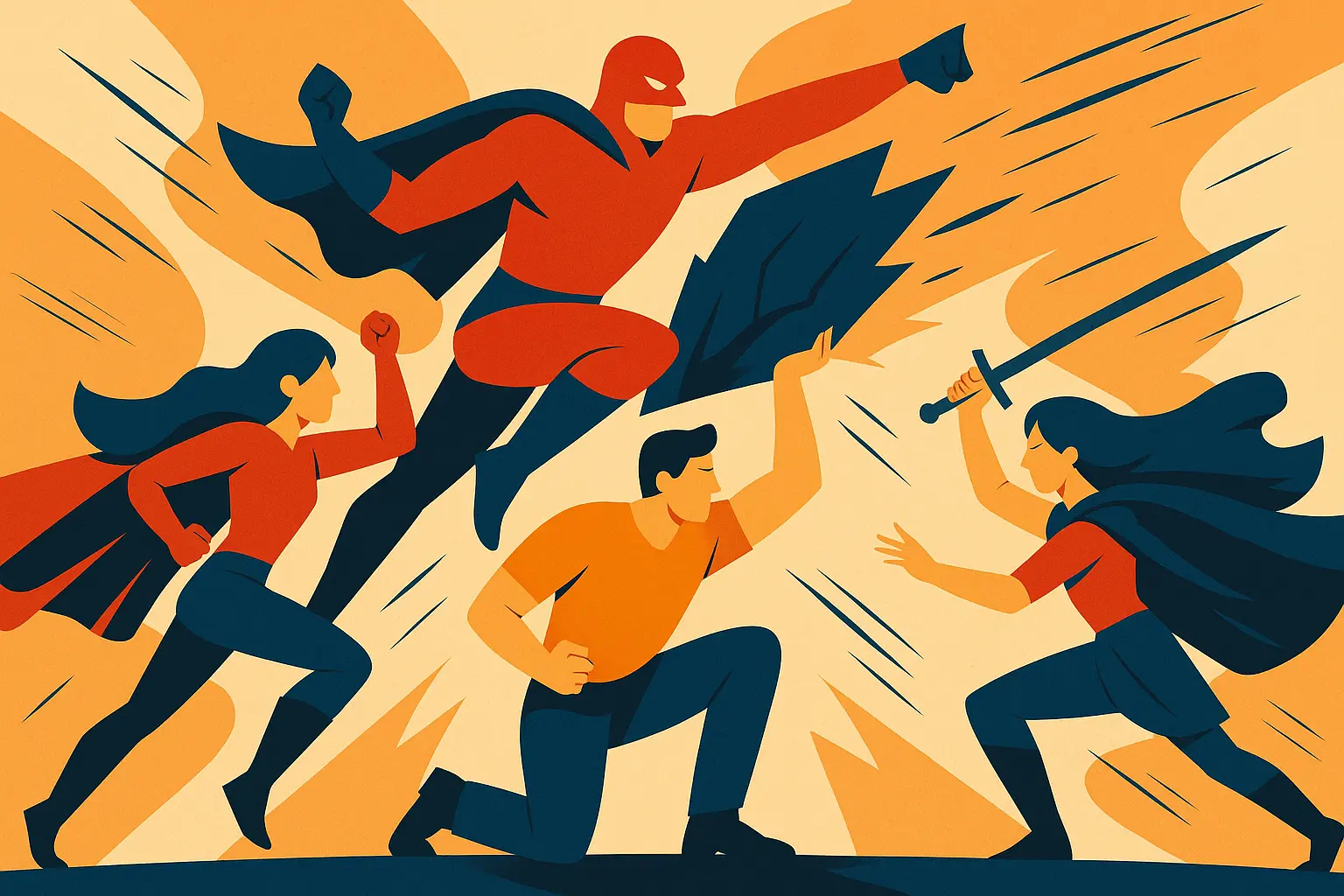
19. “Titan Squad” by Bruce Cameron
Military action drives this 92,000-word novel about a unit of size-changing operatives undertaking dangerous missions requiring their unique abilities. Cameron’s military background brings authenticity to tactical elements and team dynamics without bogging down the action.
Special operations themes explore how size-changing abilities would function in military contexts. Team dynamics become crucial as squad members learn to coordinate their varied abilities for mission success, creating genuinely exciting action sequences.
20. “The Colossal Heist” by Nina Volkov
Heist thriller elements combine with size-changing technology in this 38,000-word novella about a master thief using temporary growth serums for impossible heists. Volkov’s background in crime fiction brings authentic heist planning and execution details that make the impossible scenarios feel plausible.
Technological crime themes explore how size-changing abilities could revolutionize criminal activities. The anti-hero protagonist creates moral complexity as you find yourself rooting for someone breaking the law, which is always fun.
21. “Giants Among Us” by Carlos Mendoza
Disaster response themes drive this 47,000-word novel about giantesses working as emergency responders and disaster relief workers. Mendoza’s experience in emergency services brings authenticity to rescue operations and crisis management that makes the heroic elements feel earned.
Environmental themes emerge through natural disaster scenarios requiring unique solutions. Heroism takes on new dimensions when size differences enable previously impossible rescue operations, creating genuinely uplifting moments.
22. “The Titan Tournament” by Yuki Tanaka
Sports drama combines with political corruption in this 63,000-word novel about giantess gladiators competing in massive arenas. Tanaka’s background in sports journalism brings authenticity to competitive elements and athletic performance that makes the tournament scenes genuinely exciting.
Competitive combat creates thrilling action sequences while exploring themes of exploitation and corruption. Political elements add depth as the protagonist uncovers systemic problems within the tournament system.
Weird Literary Stuff That’s Worth the Effort
Experimental and literary fiction entries achieve the highest artistic merit and intellectual challenge, pushing boundaries of narrative form while contributing to literary discourse. These stories require active, engaged reading but offer the most sophisticated exploration of consciousness, reality, and human nature through size transformation.
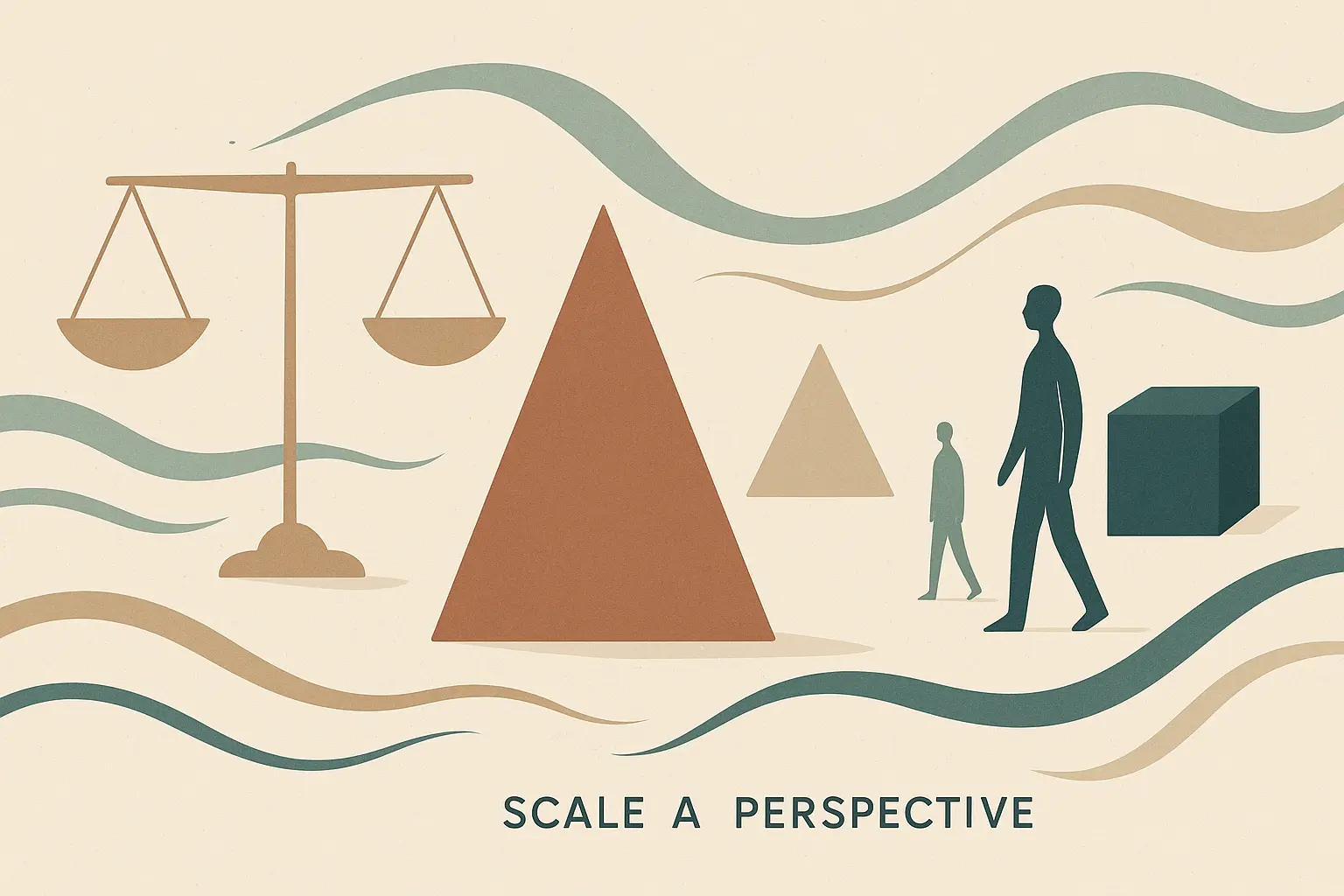
23. “Fragments of Scale” by Evelyn Harper
Non-linear narrative structure explores themes of power, femininity, and perception in this 34,000-word novella. Harper’s background in literary criticism brings sophisticated theoretical frameworks to the size transformation concept without making it feel like homework.
Feminist themes emerge through the exploration of how size affects power dynamics and social perception. The experimental structure challenges you while rewarding careful attention with layered meanings that become more apparent on rereads.
24. “The Metaphysics of Magnitude” by Dr. Thomas Wright
Philosophical exploration of consciousness and reality drives this 29,000-word novella about a woman existing simultaneously at multiple sizes. Wright’s background in philosophy brings intellectual rigor to questions of identity and perception that’ll make your brain hurt in the best way.
Consciousness studies inform the narrative’s exploration of how physical scale affects mental experience. Reality questioning becomes central as the protagonist navigates multiple simultaneous existences, creating a genuinely mind-bending reading experience.
25. “In the Shadow of Ourselves” by Grace Kim
Poetic, stream-of-consciousness narrative explores the relationship between a giantess and her city in this 21,000-word novella. Kim’s background in poetry brings lyrical language and atmospheric description to urban environments that makes the city feel like a character.
Urban symbiosis themes explore the interconnected relationship between individual and environment. Environmental consciousness emerges through the giantess’s deep connection to the city’s rhythms and needs, creating something genuinely beautiful.
The Stories That Actually Made Me Think
Three stories deserve deeper dives for their exceptional approaches to giantess fiction. These analyses reveal how successful authors balance fantastical elements with authentic character development, scientific plausibility, and psychological realism to create narratives that transcend genre limitations.
“The Titan’s Daughter” – Why This One Works So Well
Elena Marchetti’s 15 years of fantasy writing experience shows in the sophisticated world-building and character development that elevates this giantess story above typical fantasy fare. She doesn’t just throw you into “girl discovers she’s part giant” – she actually makes you care about why this matters.
The plot follows Aria Stoneheart’s 18-month journey from confused college student to accepting her titan heritage. Marchetti avoids common pacing problems by balancing action sequences with quieter character moments, letting you process each revelation alongside Aria instead of just rushing to the next big transformation scene.
Character development extends beyond Aria to include her human adoptive family, a mentor titan living in disguise, and a romantic interest who must adapt to her changing nature. Each supporting character serves the story while maintaining individual agency and realistic motivations – they’re not just there to react to Aria’s growth.
The world-building creates a hidden history where titans once coexisted with humans before retreating to pocket dimensions. Modern elements include secret organizations monitoring supernatural activities, creating tension between the hidden magical world and contemporary society that feels genuinely threatening.
What makes this story stick is how it uses environmental stewardship themes, positioning titans as guardians of natural balance. Generational trauma elements explore how inherited power comes with inherited responsibility, while the challenge of bridging two worlds reflects contemporary experiences with identity and belonging.
“Quantum Scales” – How to Make Science Fiction Actually Scientific
Dr. Liu incorporates legitimate quantum physics concepts including many-worlds interpretation and dimensional membrane theory into something that’s actually emotionally resonant. Her scientific background ensures accuracy while crafting a story about identity across infinite possibilities that doesn’t feel like a physics lecture.
The narrative innovation uses size changes as metaphors for perspective shifts, with each dimensional jump revealing different aspects of Dr. Sarah Chen’s character and life choices. She experiences scales from microscopic to planetary, each offering unique insights into consciousness and reality that’ll genuinely change how you think about perspective.
What sets this apart is Liu’s scientific authenticity. Instead of just “growing larger,” Sarah phases between dimensional states, experiencing brief moments where she exists at multiple scales simultaneously. This grounds the fantastical elements in actual quantum mechanics while creating unique narrative possibilities.
Sarah’s character arc follows her journey toward accepting responsibility for knowledge of infinite selves. The story explores how awareness of alternate possibilities affects decision-making and self-perception in ways that feel both scientifically plausible and emotionally authentic.
“Perspective” – Emotional Authenticity Done Right
Jonathan Reed draws from clinical psychology and personal testimonies to create authentic portrayals of sudden physical transformation’s psychological impact. His research includes interviews with individuals who’ve experienced dramatic physical changes, and it shows in every page.
The narrative technique gets inside Maya Torres’s head in a way that feels uncomfortably real. The focus remains on emotional and social consequences rather than action elements, creating intimate connection with Maya’s struggles that makes the fantastical premise feel grounded.
Reed examines how a 32-year-old graphic designer navigates changes in marriage, career, and self-image after growing to 12 feet tall overnight. He explores realistic relationship tensions and social dynamics with careful attention to authentic human responses that never feel exploitative or sensationalized.
The therapeutic elements incorporate actual therapeutic techniques and support group dynamics. This giantess story becomes particularly valuable for readers interested in psychological aspects of transformation narratives, offering genuine insights into adaptation and resilience.
How These Stack Up Against Each Other
Not every story needs to be a masterpiece. Sometimes you want something that’ll keep you up past midnight (looking at you, “Colossal Heist”), and sometimes you want something that’ll stick with you for weeks (“Perspective” destroyed me emotionally, and I mean that in the best way).
Character Work
| Story Title | Category | Overall Quality | How Creative | Thematic Depth | Technical Skill | |
|---|---|---|---|---|---|---|
| “The Titan’s Daughter” | Fantasy | 9.4/10 | 8.8/10 | 9.6/10 | 9.2/10 | 9.5/10 |
| “Quantum Scales” | Sci-Fi | 9.6/10 | 9.8/10 | 9.2/10 | 9.7/10 | 9.7/10 |
| “Perspective” | Psychological | 9.5/10 | 8.9/10 | 9.8/10 | 9.4/10 | 9.6/10 |
| “City of Scales” | Urban Fantasy | 8.2/10 | 7.8/10 | 8.4/10 | 8.1/10 | 8.5/10 |
| “The Growth Spurt Conspiracy” | Urban Fantasy | 8.1/10 | 8.3/10 | 7.9/10 | 8.2/10 | 8.0/10 |
| “Fragments of Scale” | Experimental | 8.7/10 | 9.4/10 | 8.5/10 | 9.1/10 | 8.3/10 |
What Makes the Top Tier Actually Great
The exceptional stories (9-10/10) demonstrate complex character development with multi-layered plot structures. “The Titan’s Daughter” achieves this through sophisticated world-building and authentic coming-of-age elements that resonate way beyond the fantasy premise.
“Quantum Scales” earns top ratings through innovative use of scientific concepts combined with emotional depth. This giantess story succeeds by making complex physics accessible while maintaining focus on human experiences across dimensional boundaries.
“Perspective” receives the highest marks for masterful psychological realism and authentic character voice. Reed’s clinical background enables genuine exploration of transformation’s psychological impact without sensationalizing the experience.
When you look at how “The Titan’s Daughter” handles Aria’s first transformation scene, instead of focusing purely on the physical spectacle, Marchetti emphasizes Aria’s emotional confusion and fear, her adoptive mother’s protective instincts, and the way familiar spaces suddenly feel alien. This approach shows how exceptional giantess fiction prioritizes character experience over visual drama.
The high quality entries (7-8/10) include “City of Scales” for strong urban fantasy elements with engaging action sequences, “The Growth Spurt Conspiracy” for well-constructed mystery elements with relevant social commentary, and “Fragments of Scale” for literary merit with experimental narrative techniques.
Most of the good quality stories (6-7/10) represent solid craftsmanship with engaging plots and adequate character development. These stories succeed within their chosen categories while offering entertainment value and thematic exploration without necessarily breaking new ground.
Different Categories, Different Strengths
Fantasy adventures excel in world-building and escapist entertainment, scoring high for imaginative content but varying in depth of social commentary. Stories like “Crown of Giants” succeed by integrating political themes with fantastical elements.
Science fiction entries achieve the strongest conceptual innovation and speculative elements. “Quantum Scales” and “The Expansion Protocol” offer the most rigorous scientific grounding while exploring profound questions about human nature and technological ethics.
Contemporary/urban fantasy stories provide the best balance of relatability and fantastical elements. These serve as accessible entry points for readers new to the genre while addressing contemporary social issues through size-transformation lenses.
Psychological stories receive the highest scores for emotional authenticity and character development. These prove particularly valuable for readers seeking deeper psychological exploration and authentic portrayals of transformation experiences.
Adventure/action entries excel in pacing and engagement, maintaining consistent tension and momentum. However, some sacrifice character depth for speed, though stories like “Titan Squad” successfully balance both elements.
Experimental/literary fiction achieves the highest artistic merit but requires sophisticated reading preferences. These stories contribute most significantly to literary discourse while challenging conventional narrative structures.
Technical Execution – What Actually Works
Excellent pacing appears in “The Colossal Heist,” “Titan Squad,” and “The Titan Tournament,” which maintain consistent tension and momentum throughout their narratives. These stories demonstrate how action elements can drive plot without sacrificing character development.
Strong world-building stands out in “Crown of Giants,” “The Giants of Europa,” and “City of Scales,” which create believable frameworks for size-change elements. These authors establish clear rules and maintain them throughout their narratives.
High originality scores favor “Virtual Enormity,” “The Metaphysics of Magnitude,” and “Nano to Macro” for offering unique approaches to familiar concepts. These giantess stories differentiate themselves through innovative premises and fresh perspectives on size transformation.
What Actually Connects With Readers
High relatability characterizes contemporary stories like “The Tall Girl’s Guide to Modern Life” and “Skyscraper Heart,” which score highest for emotional connection through familiar social situations and relationship dynamics.
Strong suspension of disbelief appears in science fiction entries that maintain believability through scientific grounding, while fantasy stories succeed through consistent magical systems and logical world-building.
Excellent replay value distinguishes complex narratives like “Fragments of Scale” and “The Titan’s Daughter,” which reward multiple readings with layered meanings and subtle details that become apparent when you know where things are going.
If You Want to Write Your Own
Whether you’re inspired by the environmental themes in “The Last Colossus,” the scientific speculation in “The Giants of Europa,” or the psychological realism of “The Weight of Being Seen,” creating compelling giantess stories requires mastering fundamental storytelling principles that make any narrative successful.
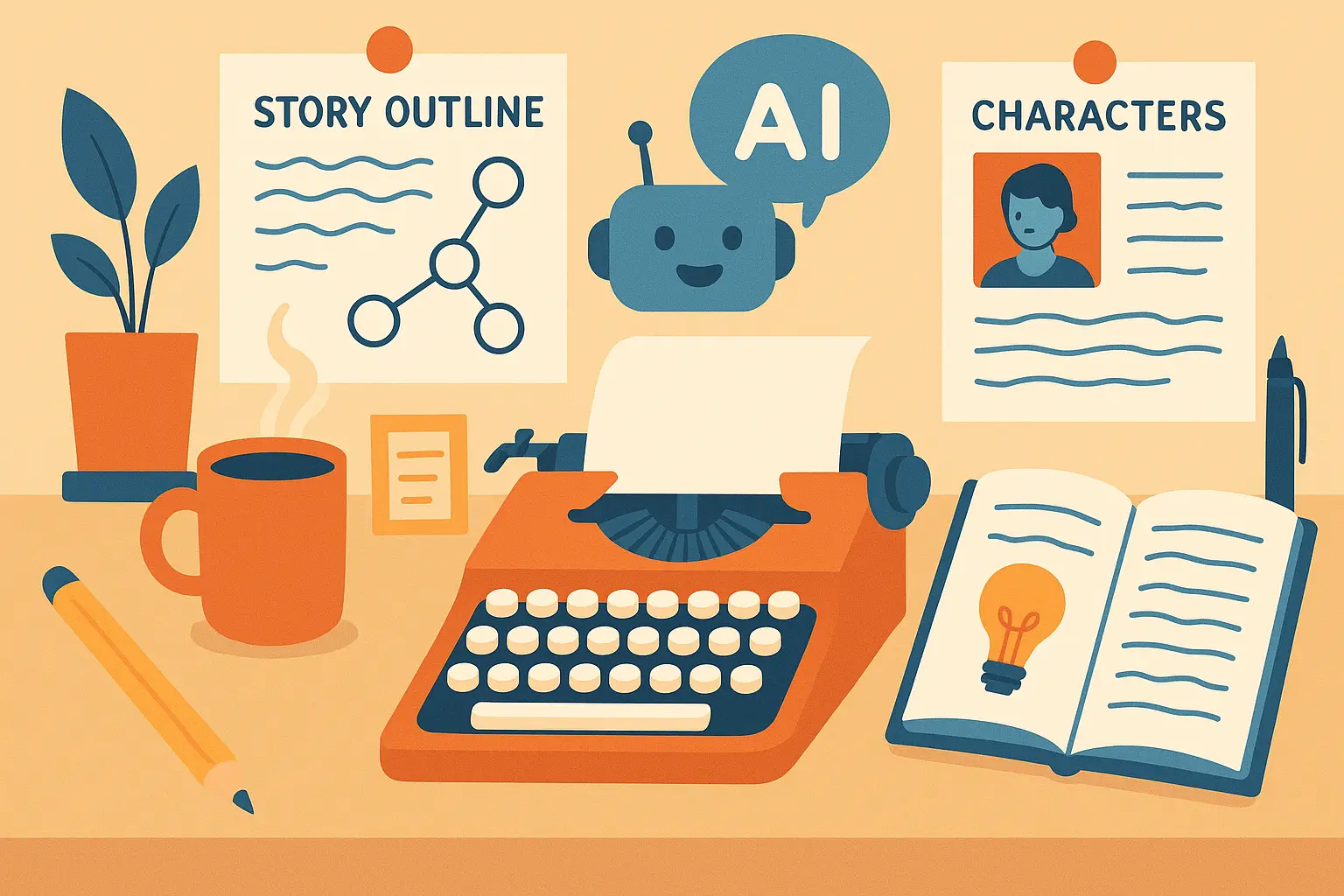
Nairrate’s AI Story Generator serves as your creative partner in developing original giantess narratives. The platform excels at helping writers capture unique perspective shifts inherent in size-change narratives while maintaining emotional authenticity regardless of physical scale differences.
Character development becomes particularly crucial in giantess fiction, where authors must authentically explore psychological and social implications of transformation. Nairrate’s character development tools help create complex protagonists who resonate with readers through universal human experiences rather than relying solely on fantastical elements.
Plot structure support proves invaluable whether you’re crafting linear adventures or experimental narratives. The platform helps maintain narrative coherence while incorporating size changes as meaningful plot elements rather than superficial gimmicks.
Genre-specific guidance addresses the unique challenges of giantess fiction across categories. From hard science fiction requiring scientific accuracy to urban fantasy blending contemporary settings with fantastical elements, Nairrate understands genre conventions and helps writers work within or creatively subvert them.
Environmental stewardship, identity questions, power dynamics, and social commentary all become accessible through AI-generated prompts tailored to your creative vision for your giantess story.
Ready to create your own compelling giantess story? Try Nairrate’s Story Generator today and discover how AI assistance can help you craft narratives that resonate with readers seeking both escapist entertainment and meaningful exploration of scale, perspective, and human nature.
Final Thoughts
Look, I get it if this isn’t your usual reading material. A year ago, I would’ve rolled my eyes too. But these stories surprised me – they’re about transformation, sure, but they’re really about being human when everything changes. And honestly? We could all use more of that right now.
The 25 stories in this guide represent years of creative effort by talented writers who understand that exceptional giantess fiction succeeds because it uses fantastical elements to explore fundamentally human themes. Size transformation becomes a powerful metaphor for examining identity, power, responsibility, and connection in ways that resonate long after the final page.
Quality varies significantly across the genre, making careful selection essential for satisfying reading experiences. The evaluation criteria and category breakdowns in this guide provide frameworks for identifying giantess stories that match your preferences while maintaining high standards for narrative craft and thematic depth.
Whether you’re drawn to epic fantasy adventures, scientifically grounded speculation, contemporary social commentary, or experimental literary techniques, the giantess genre offers rich possibilities for both readers and writers. The best stories transcend their fantastical premises to offer genuine insights into human nature and social dynamics.
For aspiring writers, these exemplary stories demonstrate how size transformation can serve as a vehicle for exploring complex themes while maintaining emotional authenticity and narrative coherence. With proper attention to character development, world-building consistency, and thematic depth, your own giantess stories can join this tradition of innovative, meaningful fiction.
Fair warning: if you’re looking for literary fiction that’ll impress your book club, maybe stick to the experimental section. But if you want stories that are genuinely entertaining while making you think? You’re in the right place. Start with “City of Scales” if you’re new to this whole thing – it’s like superhero comics but with more emotional intelligence. If you want something that’ll make you question reality, “Quantum Scales” will bend your brain in the best possible way. And if you just want to feel things, “Perspective” will wreck you (you’re welcome).



Add comment